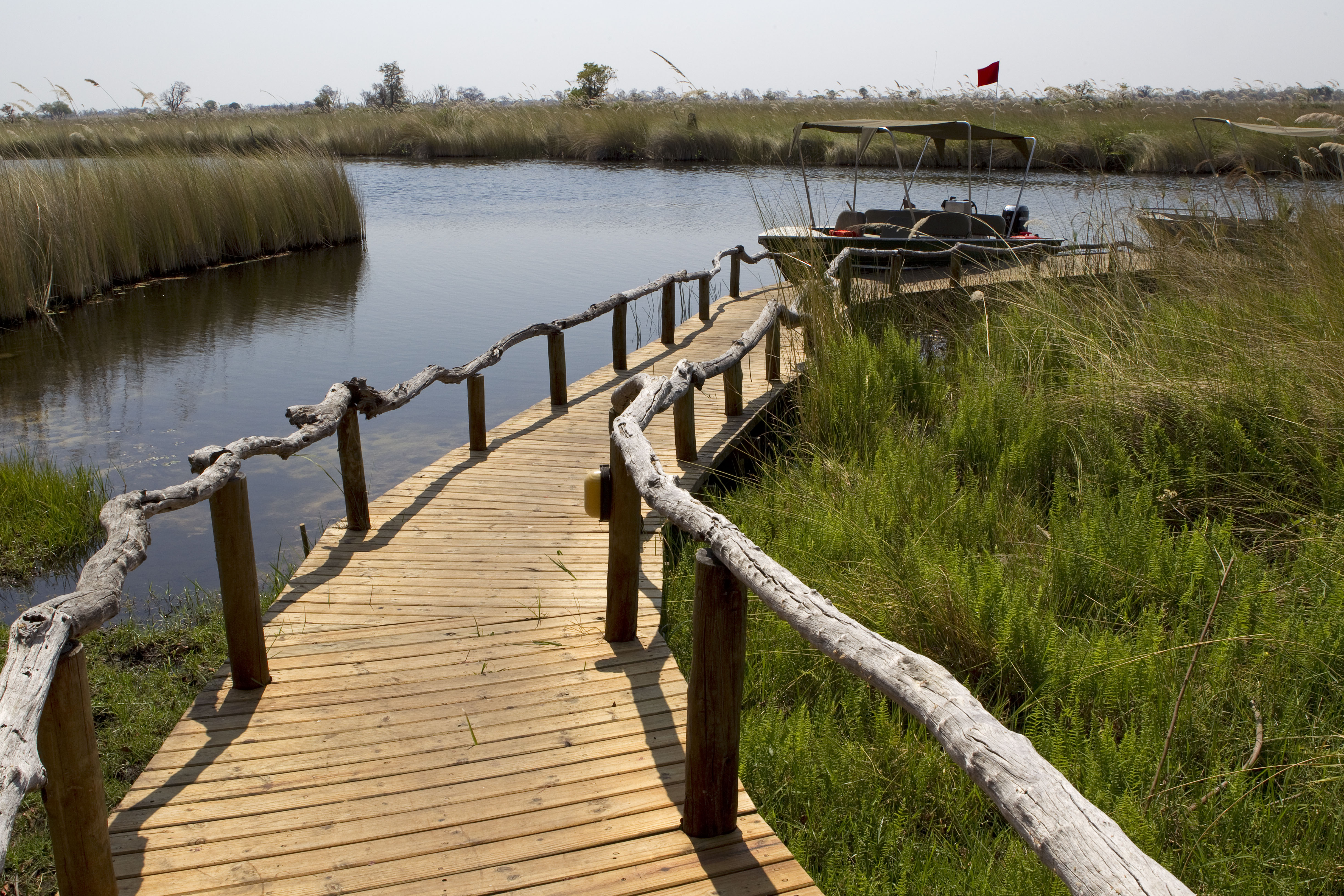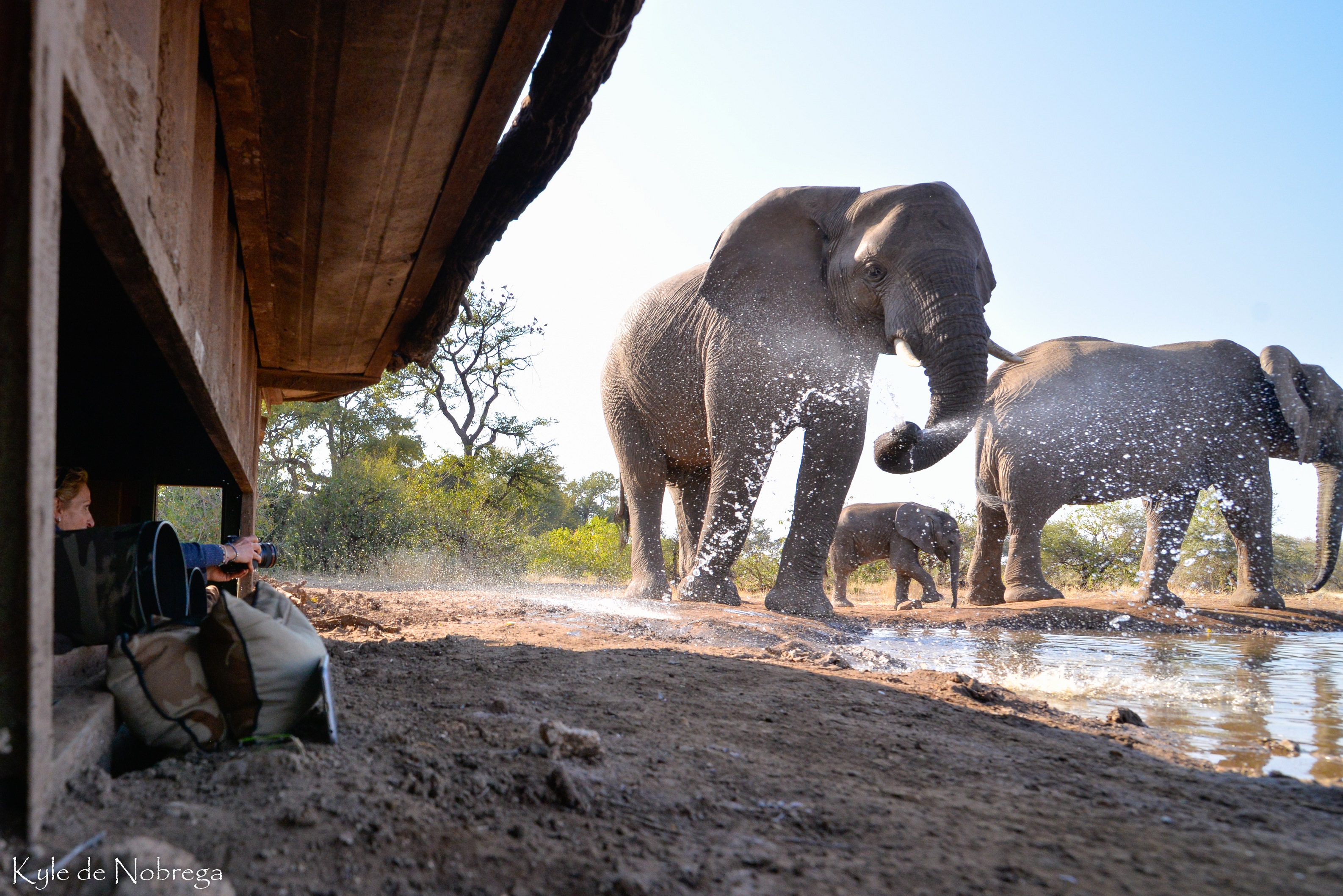Botswana is said to be Southern Africa’s top wildlife destination.
Safari-goers have a range of camps to choose from, including ultra-luxurious, the more adventurous camps, and mobile camping sites. Botswana is known as the most successful model from a tourism perspective, as private concessions have been set up on a long-term lease arrangement with involvement of local communities. This philosophy has ensured that Botswana land remains the property of Botswana nationals, and that employment and upliftment opportunities are created for its people. Many of the camps are accessed by small light aircrafts which allows for more time on safari.
Mokoro (traditional dug-out canoe) through the channels and waterways of the Okavango Delta, or enjoy a boat safari on the Chobe River. Traditional 4-wheel vehicle safaris are also available. The elephant herds of the Chobe, Linyanti and Savute areas are legendary.
The flood waters of the Okavango Delta are a particular treat. Lush landscapes, and the abundance of water make for a completely unique safari experience. Water lilies, palm fringed islands, clear waters, papyrus, and mokoro canoeing are but some of the features of the Delta safari. This truly is a mecca for keen birders!
The Okavango Delta is a system in a continuous state of flux – it’s constantly changing nature make it a unique destination regardless of which time of the year guests choose to visit.
The water entering the delta is unusually pure, due to the lack of agriculture and industry along the Okavango River. It passes through the sand aquifers of the numerous delta islands and evaporates by leaving enormous quantities of salt behind. These precipitation processes are so strong that the vegetation disappears in the centre of the islands and thick salt crusts are formed.
The waters of the Okavango Delta are subject to seasonal flooding, which begins about mid-summer in the north and six months later in the south (May/June). The water from the delta is evaporated relatively rapidly by the high temperatures, resulting in a cycle of cresting and dropping water in the south. Islands can disappear completely during the peak flood, then reappear at the end of the season.
The delta provides a seasonal habitat to numerous different species. Among these are African elephants, the African buffalo, the hippopotamus, the lechwe, the topi, the blue wildebeest, the giraffe, the Nile crocodile, the lion, the cheetah, the leopard, hyenas, wild dogs, the greater kudu, the sable antelope, both the black and the white rhinoceros, the water monitor, zebras, the warthog and the chacma baboon. The Delta also includes over 400 species of birds, including the African fish eagle, the crested crane, and the sacred ibis.
(Wikipedia)
The Savuti Channel is another must-see. It is now flowing after more than 20 years, bringing much needed water to the area.
Another sought-after destination is the Moremi with its renowned elephant and lion populations.
Makgadikgadi is a totally different area – one of complete isolation and stark landscapes. Visitors can enjoy relics of the ancient Bushmen tribes, and the semi-habituated meerkats of the Kalahari Desert. Game viewing is great from December to May, while Quad Biking is exceptional in the dry season. This region is also famous for its sightings of brown hyena.
The northern Tuli Game Reserve is nestled within the borders of South Africa, Botswana and Zimbabwe. This vast open landscape peppered with baobabs is one of the most exciting in Africa, and is a hot spot for exceptional wildlife viewing (including huge herds of elephant, leopard, lion and a massive bird population). Mashatu Game Reserve, known as the Land of the Giants, is the ideal reserve from which to experience the magic of the northern Tuli. Beyond the traditional safari, visitors are also able to indulge in a sense of adventure on mountain bike, horseback or on foot. On-site researchers are available to take guests on exclusive focused safaris for an indepth view into the lives of the predators of the area, as well as the elephant herds.
Why not book a combination itinerary which includes a number of different camps/ regions in Botswana? With a country so diverse, visitors can literally spend ten days on safari!
Contact us for further information.








